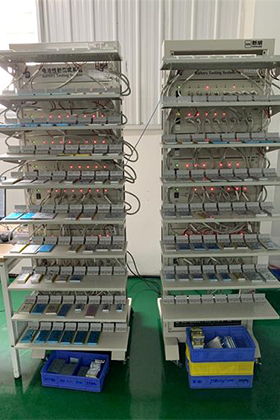谁比聚合物电池PK锂电池更好?
2020-06-08 09:16:32
This mobile power polymer battery and lithium battery, which of them have more development trends, and what are their respective advantages and disadvantages, we carry out PK, clear, and will soon unravel the mystery.
The concept of lithium batteries is used very frequently. If you pay attention, we will find that there are three differences between broad sense, narrow sense and narrow sense. Lithium batteries in a broad sense include lithium primary batteries and lithium ion batteries; because lithium ion batteries are more widely used than lithium primary batteries, lithium batteries generally refer to lithium ion batteries in a narrower sense; there are two categories within lithium ion batteries: Polymer lithium-ion batteries and liquid lithium-ion batteries, because of the greater quality and more applications of liquid lithium-ion batteries, so the narrow sense of lithium batteries refers to liquid lithium-ion batteries, and polymer lithium-ion batteries are also called lithium polymers Batteries are commonly referred to as polymer batteries. If you compare the difference between a lithium polymer battery and a lithium battery in a broad sense and a narrower sense, then the only thing is the relationship between the concept and the concept. The lithium polymer battery is included in the lithium battery. Therefore, what is more meaningful is the comparison in the narrow sense: that is, the comparison between the polymer battery and the liquid lithium ion battery. Based on this, the following refers to the liquid lithium ion battery.

1. The fundamental difference is raw materials
This is the total root of the different performances of the two. Polymer battery refers to the use of polymer materials in at least one of the three components of positive electrode, negative electrode or electrolyte. Macromolecule means large molecular weight, and the corresponding concept is small molecule. Polymer has high strength, high toughness and high elasticity. The polymer materials currently developed for polymer batteries are mainly used for positive electrodes and electrolytes.
①In addition to the inorganic compound of lithium battery, the positive electrode material of polymer battery can also use conductive polymer;
②. The electrolytes of polymer batteries include polymer electrolytes (solid or colloidal) and organic electrolytes. Lithium batteries use electrolytes (liquid or colloidal)
2. Shaping difference
The polymer battery can be thinned, any area and any shape, because the electrolyte can be solid and colloidal instead of liquid, and the lithium battery uses an electrolyte, which requires a solid case as a secondary package to contain the electrolyte . Therefore, this also makes the lithium battery add a part of the weight.
3. Security
Most of the current polymers are soft-pack batteries, which use an aluminum-plastic film as the casing. When the organic electrolyte is used inside, even if the liquid is hot, it will not explode, because the aluminum-plastic film polymer battery uses solid or colloidal state without leakage, but Naturally broken. But anything is not absolute. If the instantaneous current is large enough and a short circuit occurs, it is not impossible for the battery to spontaneously ignite or burst. The occurrence of security accidents in mobile phones and tablets is mostly caused by this situation.
4. Cell voltage
Because polymer batteries use polymer materials, they can be made into multiple layers in the battery cell to achieve high voltage, and the nominal capacity of the lithium battery cell is 3.6V. To achieve high voltage in actual use, you need to combine multiple The cells can be connected in series to form an ideal high-voltage working platform.
If you compare the polymer battery with the lithium battery with the above characteristics, then the conclusion is certain. However, the application of lithium battery in the market is still dominant, which shows that lithium battery also has a comparative advantage, we continue to compare.
5. Conductivity
Polymer batteries have a low solid electrolyte ion conductivity. At present, some additives are mainly added to make them gel electrolytes to improve the conductivity. This only increases the ionic conductivity, unlike the conductivity of lithium batteries to maintain a stable value, and will not be affected by the quality of auxiliary materials.

6. Capacity The capacity of polymer batteries has not been effectively improved, and it has been reduced compared with standard capacity lithium batteries.
7. Manufacturing process
The thinner the polymer battery, the better the production, and the thicker the lithium battery, the better the production, which makes the application of lithium batteries expandable.
8. price
This is the key factor that determines the market capacity of the two. At present, the price of polymer batteries on the market is generally higher than that of lithium batteries, which affects the market capacity of the two. The ratio of the former to the latter is 1:9.
Summary: Polymer batteries are more used in small applications, and lithium batteries are more promising in large applications. If polymer batteries can break through the limitations of price and design, it may represent the trend of battery development because of their environmental protection and safety. Follow the trend.
-
skype
Zale Zhou
